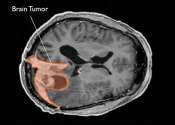Ozempic 'oops' babies spark debate about weight-loss drug use as fertility drug
A surprising thing is happening to some women on weight-loss drugs who've struggled with fertility issues: They're getting pregnant. That's leading to questions about the safety of medications from Novo Nordisk A/S and Eli ...
Apr 22, 2024
0
0









